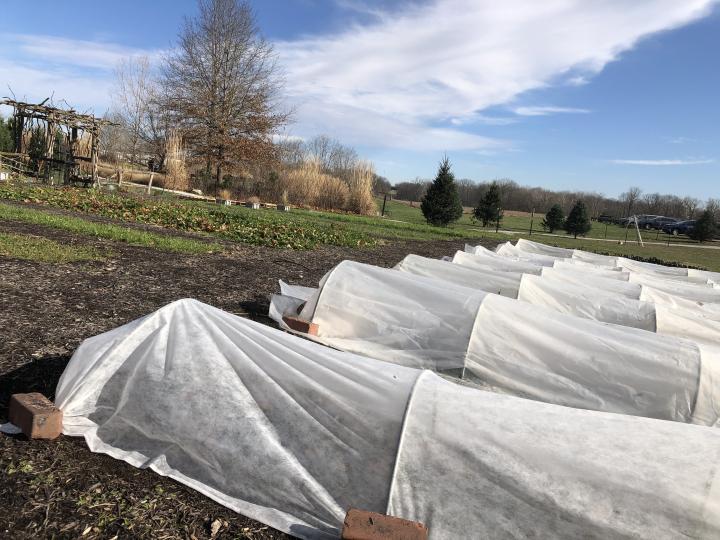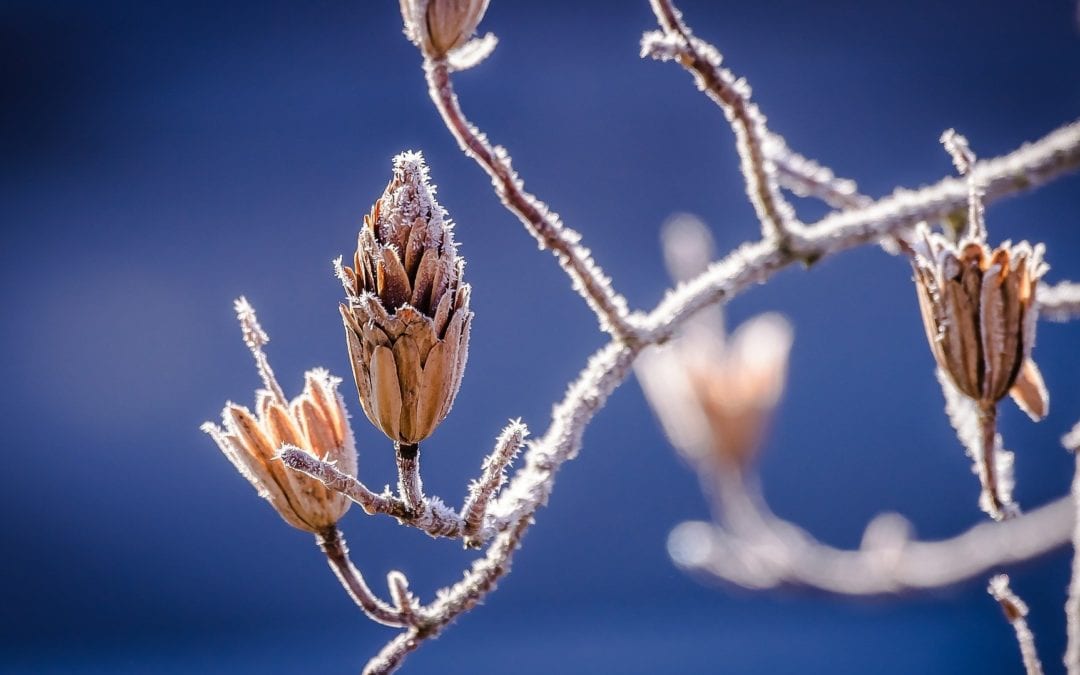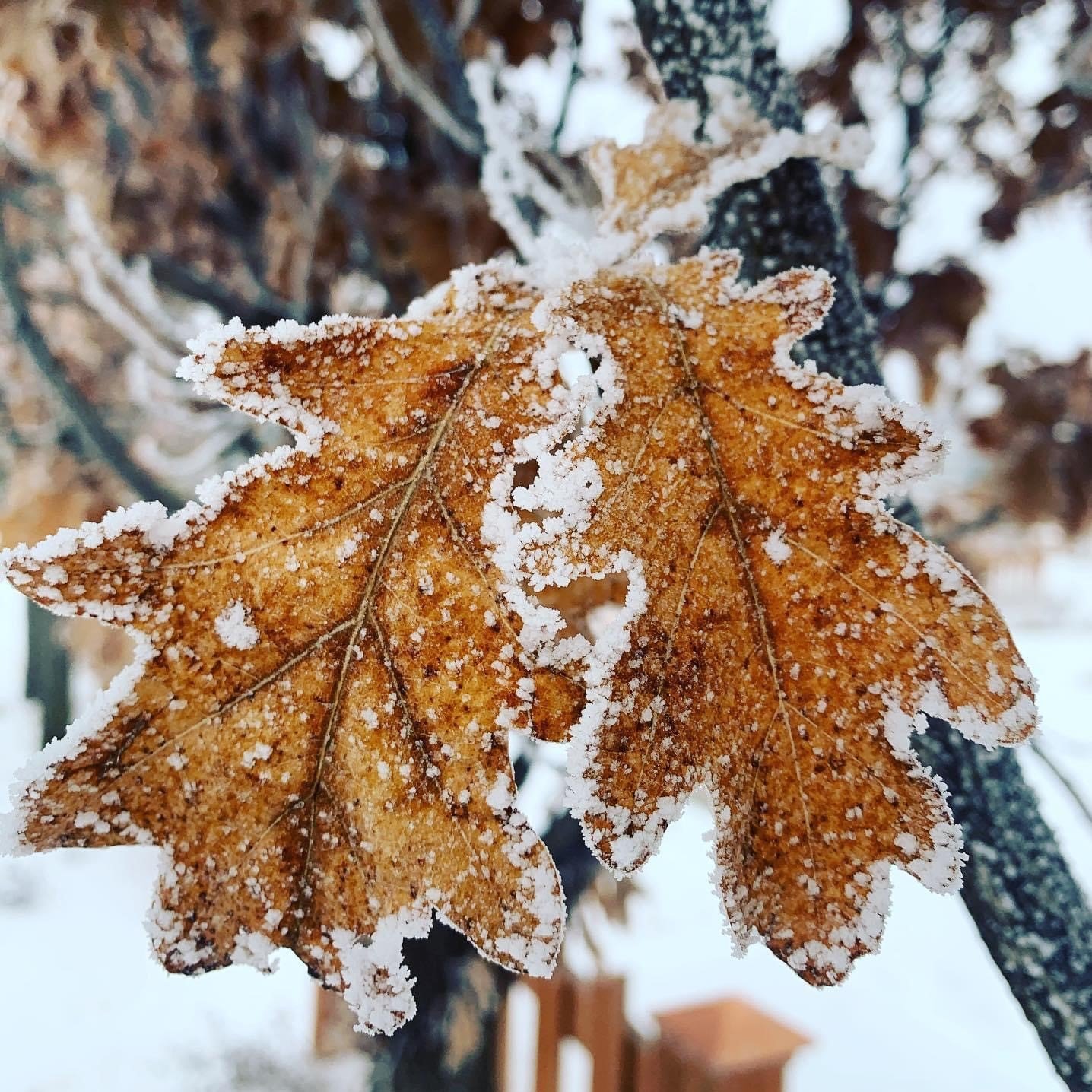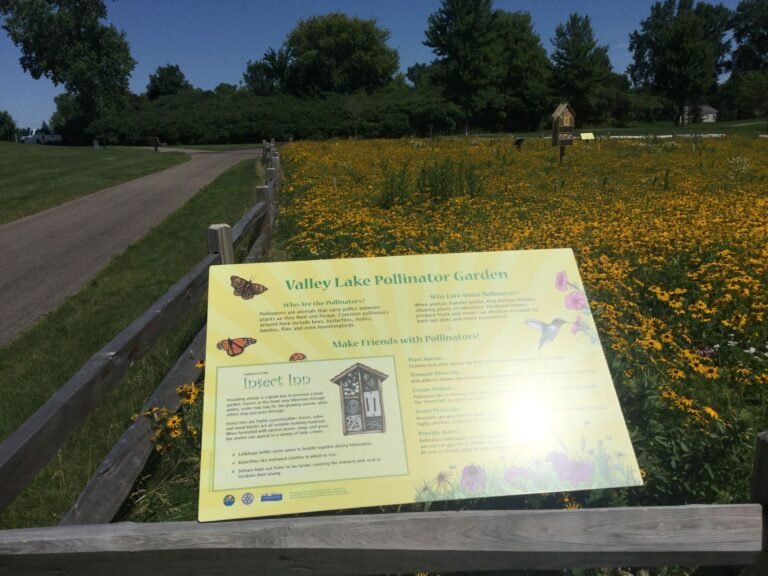As winter approaches, so does the threat of frost to our beloved pollinator plants. These plants are vital for our ecosystem, providing food and habitat for bees, butterflies, and other pollinating insects.
The chill of winter frost can damage or even kill these important plants. Gardeners and nature enthusiasts must act to shield them from the harsh cold. Pollinator plants are like a lifeline for many insects. Without them, our gardens would lack the vibrant life that these creatures bring.
As temperatures drop, the risk to these plants grows. A blanket of frost can stop them from thriving, or worse, result in their demise. This is troubling news for pollinators that rely on them for survival. It’s not just about keeping a garden pretty; it’s about preserving a vital part of the natural world. With some knowledge and effort, we can protect these plants through the frosty months. This means more than just covering them when the cold hits. It involves understanding the plants’ needs and taking steps to ensure they can withstand winter’s touch. This introduction will guide you through the essentials of safeguarding your pollinator plants from winter frost. It’s simple, it’s necessary, and with our help, your garden will remain a haven for pollinators, even when the frost arrives.
The Importance Of Pollinator Plants
Pollinator plants play a crucial role in our environment. These plants support the survival of bees, butterflies, and other pollinating insects. Without them, our gardens, wildlands, and agriculture would struggle.
Key Roles In Ecosystems
Pollinators are vital in the life cycle of plants. They help with reproduction by transferring pollen. This process leads to the growth of seeds and fruits. It maintains biodiversity.
- Pollination leads to plant diversity.
- Supports food chains.
- Helps plants to thrive.
Benefits To Agriculture
Our farms rely on pollinator plants. These plants attract pollinators, which help crops to grow. This means better harvests and more food.
| Benefit | Description |
|---|---|
| Increase Yields | Pollinators help plants to produce more fruit. |
| Improve Quality | Fruits and veggies are bigger and better. |
| Supports Economy | Farmers earn more with healthy crops. |
Identifying Vulnerable Pollinator Plants
Identifying Vulnerable Pollinator Plants is key to garden survival during cold snaps. Pollinators rely on these plants for food and shelter. Not all plants face the same risk. Knowing which ones need protection helps your garden thrive.
Common At-risk Species
- Butterfly Bush (Buddleja)
- Coneflowers (Echinacea)
- Lavender (Lavandula)
- Bee Balm (Monarda)
Signs Of Frost Damage
Plants struck by frost may show blackened leaves or wilted flowers. Stems may appear soft or mushy. Early identification of these signs can save the plant.
Understanding Frost And Its Effects
Understanding Frost and Its Effects is key to protecting pollinator plants during the cold months. Frost happens on clear, cold nights. It can harm plants. Knowing how frost forms and its impact on plant health helps gardeners take the right steps to protect their green friends.
How Frost Forms
Frost forms when the air temperature drops. Water vapor in the air turns into ice on surfaces. This happens mostly at night. Clear skies and calm winds make it easier for frost to form.
Impact On Plant Health
Frost can damage plants. It can make leaves look burned. Young plants and new growth are at most risk. Some plants can die from too much frost. Others might stop growing or get sick easier.
- Leaves – turn brown or black
- Stems – might become soft or split
- Flowers – can wilt or fall off
- Fruit – might not grow right
Protecting plants starts with understanding frost. A simple cover at night can save them. Remember to remove the cover in the morning. This lets the plants get light and air. Also, water plants in the evening. Wet soil keeps warmth better than dry soil.
Pre-winter Plant Care Strategies
As winter draws near, safeguarding pollinator plants becomes crucial. These plants are vital for ecosystems, supporting bees, butterflies, and other pollinating insects. Pre-winter care strategies help ensure that they survive the frost and flourish in spring. Here’s how to prepare your garden for the cold.
Soil Preparation
Healthy soil acts as a blanket for plant roots. Start with mulching to protect the soil. Use organic materials like straw or leaves. This layer keeps the ground warm and moist. Remember to keep mulch a few inches away from plant stems to prevent rot.
Appropriate Watering Techniques
Plants need the right amount of water before frost hits. Water deeply but infrequently to encourage strong roots. Stop watering when the soil freezes. A good rule is to water early in the day. This gives plants time to absorb moisture before temperatures drop.
Protective Measures Against Frost
As winter approaches, pollinator plants need protection from frost. Cold snaps can damage or kill these vital plants. Below, find key strategies to safeguard your garden’s pollinators against the chill.
Mulching For Insulation
Mulch acts as a warm blanket for soil and roots. It keeps heat in and frost out. Here’s how to use mulch effectively:
- Choose organic materials like straw or leaves.
- Spread a thick layer around plants.
- Keep mulch a few inches away from stems to prevent rot.
Remember, a consistent mulch layer can mean the difference between a plant that survives winter and one that doesn’t.
Using Cloches And Covers
Physical barriers can shield plants from frost. Cloches and covers trap heat and ward off cold. Here are tips for using them:
- Place cloches over individual plants before sunset.
- Use blankets or frost cloths as larger covers.
- Secure covers to the ground to lock in warmth.
Remove covers during the day so plants can breathe and get sunlight. With these measures, your pollinator plants stand a strong chance against winter frost.

Choosing The Right Time To Act
Protecting pollinator plants from winter frost needs timely action. Choosing the right time to act is key. This means watching weather closely and knowing the best moments to cover your plants.
Monitoring Weather Forecasts
Keep an eye on local weather updates. Look for frost warnings. Use a reliable weather app or website. This helps you prepare in advance.
Optimal Timing For Protection
When frost is forecasted, act fast. Cover your plants before sunset. This traps heat. Remove covers after the frost passes, usually by mid-morning.
- Check weather daily during cold months.
- Cover plants with sheets or frost cloths.
- Use stakes to keep covers off the plants.
- Remove covers once temperature rises.
Remember, the right timing can save your pollinator plants. Act before frost hits.
Post-frost Recovery For Pollinator Plants
As winter fades, the focus shifts to the recovery of pollinator plants. Frost can cause significant damage, but with the right approach, these vital garden residents can bounce back. This section explores effective strategies for helping pollinator plants thrive after a frost.
Assessing The Damage
Begin by inspecting plants for signs of frost damage. Look for dark, soft, or wilted foliage. It’s crucial to identify which plants need attention. Early assessment prevents further harm and kickstarts the healing process.
Revitalization Techniques
Revitalizing frost-hit plants involves careful steps. Let’s delve into these restoration methods:
- Pruning: Trim damaged parts. This encourages new growth.
- Watering: Moist soil helps roots recover. But avoid waterlogging.
- Mulching: Apply organic mulch. It insulates and nourishes soil.
- Sheltering: Use cloths or covers on chilly nights. This shields plants.
Monitor plants closely. Some may need extra time and care to return to their full glory. Patience is key in the post-frost recovery phase.

Long-term Strategies For Plant Resilience
Long-term strategies boost plant resilience against winter frost. They ensure pollinator plants survive and thrive. These methods support garden health year-round.
Cultivating Hardy VarietiesCultivating Hardy Varieties
Choosing hardy plant varieties is crucial. They withstand cold better. Look for plants labeled as ‘frost-tolerant’.
- Lavender
- Coneflower
- Sage
Designing A Sheltered Garden Layout
A sheltered garden layout shields plants from harsh elements. Use natural features and structures. Position plants to block wind and trap heat.
| Feature | Benefit |
|---|---|
| Walls | Wind protection |
| Trees | Shade & heat capture |
Community Involvement In Pollinator Protection
Protecting pollinators is key for healthy plants. Community involvement makes a big difference. Everyone can help save bees and butterflies from winter cold.
Educational Programs
Learning is the first step. Schools and groups teach about pollinator needs. They show how to protect them in winter. Fun activities make learning easy. Everyone, young and old, can join these programs.
- Workshops on making bee shelters.
- Talks about planting for pollinators.
- Guides on winter garden care.
Local Conservation Efforts
Communities come together to protect pollinators. They build safe spaces for bees and butterflies. Local parks and gardens get special plants. These plants help pollinators stay warm and find food in winter.
- Plant native flowers. They are best for pollinators.
- Create winter shelters in gardens.
- Share knowledge. Teach neighbors about pollinator care.

Frequently Asked Questions
How Do I Protect Pollinators During Winter?
To protect pollinators in winter, provide natural shelters by leaving leaf litter and dead wood in your garden. These materials offer hibernation spots for insects. Additionally, planting late-blooming flowers can supply food late into the season. Avoid pesticides, as they can harm dormant pollinators.
Can Frost Damage Pollinator Plants?
Yes, frost can damage pollinator plants, especially those not native to cold climates. Tender plants may suffer from cell damage, leading to wilted or blackened foliage. To mitigate frost damage, use frost cloths or move vulnerable plants indoors if possible.
Mulching can also provide root protection.
What Are The Best Pollinator Plants For Cold Climates?
For cold climates, choose native pollinator plants accustomed to harsher conditions. Examples include Echinacea (Coneflower), Rudbeckia (Black-eyed Susan), and Sedum (Stonecrop). These plants are hardy, require less maintenance, and provide essential food and shelter for pollinators during the colder months.
When Should I Prepare My Garden For Winter Frost?
Begin preparing your garden for winter frost in late summer to early fall. This timing allows you to gradually introduce changes, such as reducing watering and planting cold-hardy species, without shocking the plants. Installing frost protection like burlap wraps or cloches should be done before the first frost.
Conclusion
Winter frost poses real threats to pollinator plants. Simple steps can save them. Cover plants before nightfall. Choose the right frost cloths. Water the soil in the morning. These actions keep your garden thriving. Remember, healthy pollinators mean a healthy ecosystem.
Protect plants, support nature. Let’s keep our green friends safe through the cold. A little effort goes a long way. Your garden will thank you come spring.


